Updated: August 18, 2019
Well, well. It is time to expand our horizons. That means more distro testing. In particular, I shall continue exploring the Manjaro 18.X range. The Plasma version turned out to be a pretty solid, colorful release. It wasn't perfect, and there were quite a few hardware-related issues with my old Nvidia-powered Pavilion dv6 laptop. But then, there were also tons of unique goodies that convinced me to persevere.
Now (meaning when this article was written, a few weeks back), I want to check the Xfce edition, and see how it fares on my eight-boot G50 laptop, running Windows 10 and a whole crop of different Linux distros, complete with UEFI/GPT and Intel graphics. This is similar to what I've done with Manjaro 17 Hakoila, having tested both the Plasma and Xfce builds. So we begin.
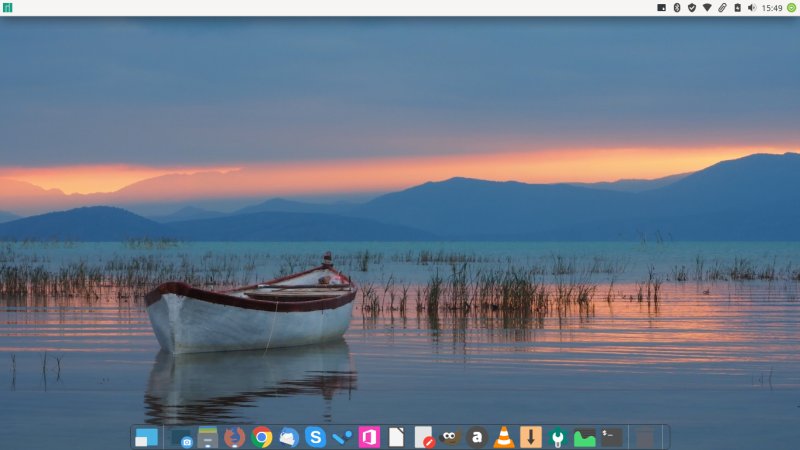
We're live
The system booted fine. The desktop looks polished, featuring a gray-green theme with reasonable font contrast, and a well-arranged layout. Some of the system area icons could have a wee better contrast, and the desktop icons text shouldn't be truncated, but those are small worries. All in all, this is a very pleasant, elegant workspace.


Nice notifications.
In Thunar, I noticed some of the old woes - Devices before Places, you can't change that, and the terminal is too transparent by default. The Ark theming works well, but for prolonged use, there are better ergonomic choices - plenty of options available with the distro, though.
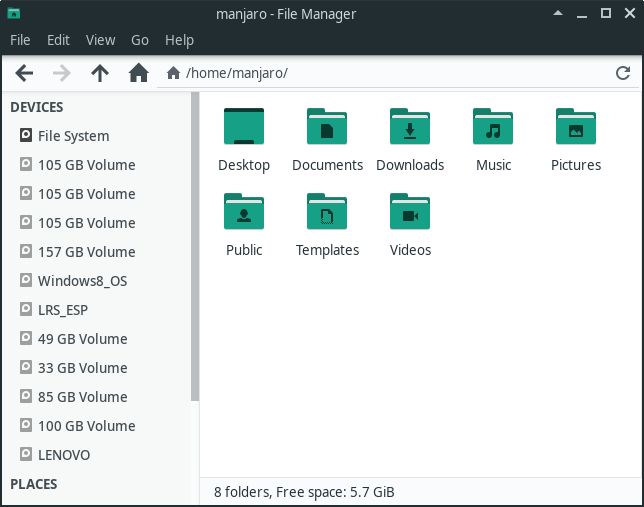

Network connectivity
It's always interesting to compare how different desktops do the same thing, and it almost always highlights the discrepancies and inconsistencies in the the distro behavior. Read my Plasma review first, please, and then compare. With this Xfce build + G50 platform: Wireless, good, Bluetooth, also good - but the pairing using the desktop wizard did not work. Instead, it worked by initiating the pairing from the phone, and the actual Bluetooth management tool looks so 1996. Samba sharing required the same tweaks (the extra package), and it took forever to start (the first attempt failed, the second worked). Then, after that, Samba speed was really fast, go figure. Printing: lovely jubbly of the box.

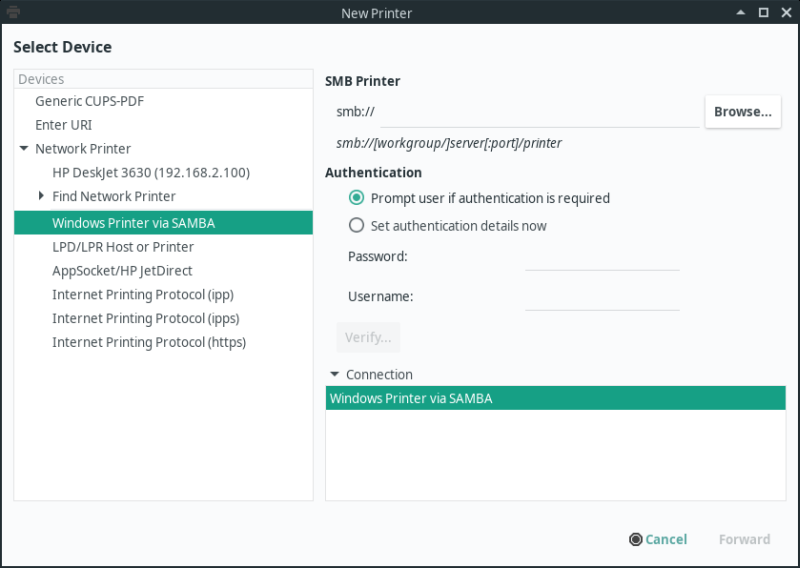
Phone connectivity and media
There were no issues getting the phones recognized and mounted - except Thunar shows them with serial numbers, which I found somewhat ugly. Media playback worked without any problems, you get Audacious for music by default, and VLC for video (but you can associate everything with VLC if you like).

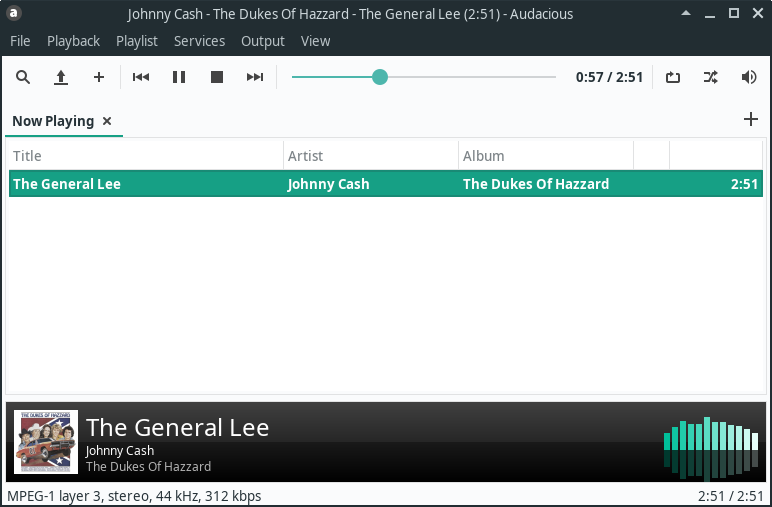

The VLC systray icon isn't the best.
Package management
Now, this is a curious one - we'll talk more about this after the installation. I did need the Samba package, and I wanted to check the GUI tool. No Octopi! You get Pamac instead. This is a sharp divergence from the Plasma experience. This also means you can enable AUR right away, there's better visual integration (Gtk), plus you have two command-line utilities, both pamac and pacman, which can be confusing. Then, there's a menu entry called Run Pamac, which did nothing. But going via Add/Remove Software did get the right program launched.
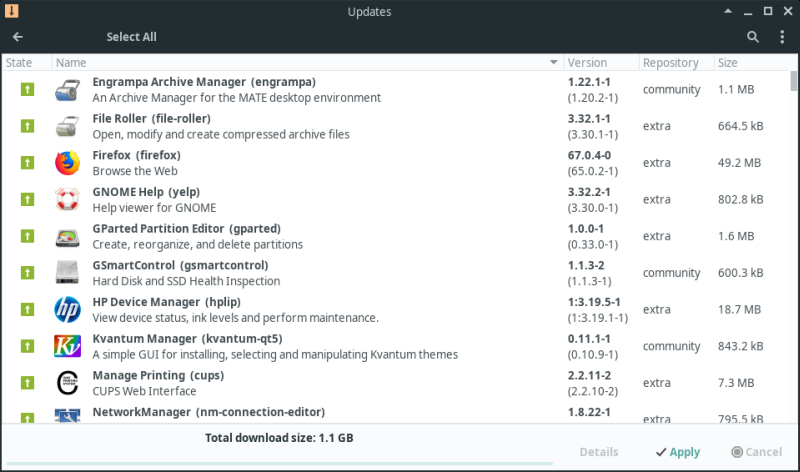
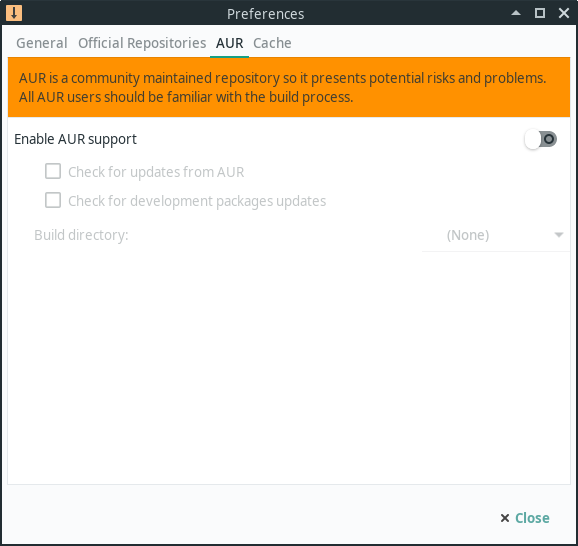
Installation
There were more inconsistencies here. It took a while for the installer to load modules, about 110 seconds, but okay. Then, you don't get partition labels the way as with the Plasma version. The setup was also decidedly longer, about 60-70 minutes. The disk was quite hot in the end. It might be the GRUB setup, or similar, not sure. When selecting partitions, I did manually choose /boot/efi, because this caused problems in the past. Not sure if this has been sorted out, but I didn't want to risk it, especially since I've done two Plasma installations of Illyria just recently.

The slides are still blurry AND they mention Octopi, but you don't get this tool here, so there's definitely an element of something either being outdated or not right or both. I think more QA is needed, and tighter alignment between these different flavors.
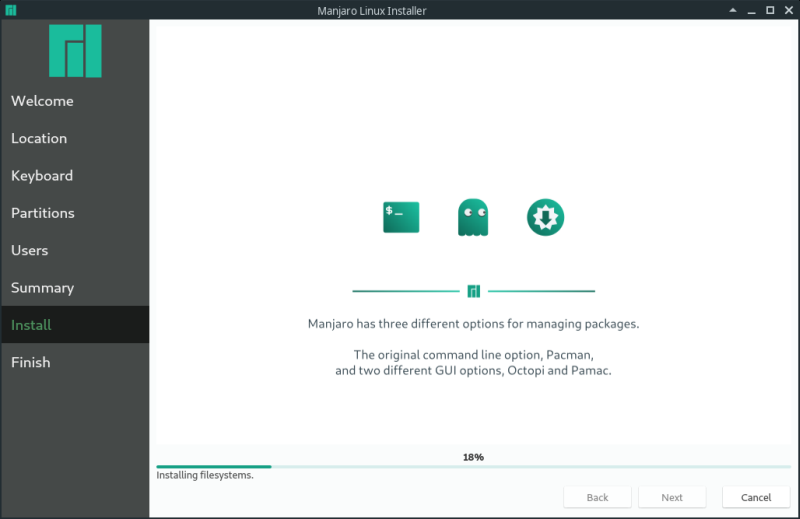
Using Illyria
The desktop installed fine. The boot sequence isn't clean. The startups are quiet and posh, but the shutdowns come with scrolling lines of text informing me about this or that service. The Wireless credentials were not saved from the live session.
Package management and updates
This was rather tricky, so at least the two flavors share this in common. Like I said, no Octopi. Then, I wanted to change my desktop layout - top panel plus dock, and so I powered Pamac to search for software. As it turns out, there was the same backlog worth 1.1 GB of updates. And Pamac wouldn't let me install individual packages, it wanted me to grab all these updates, too.
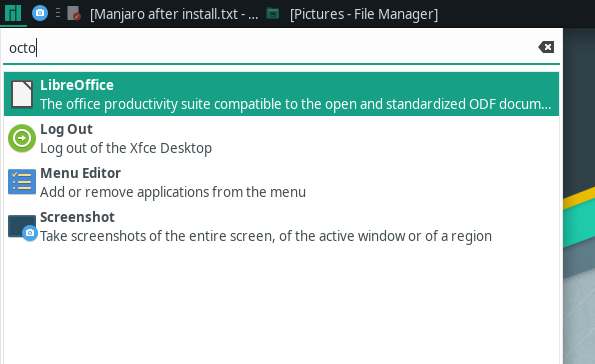
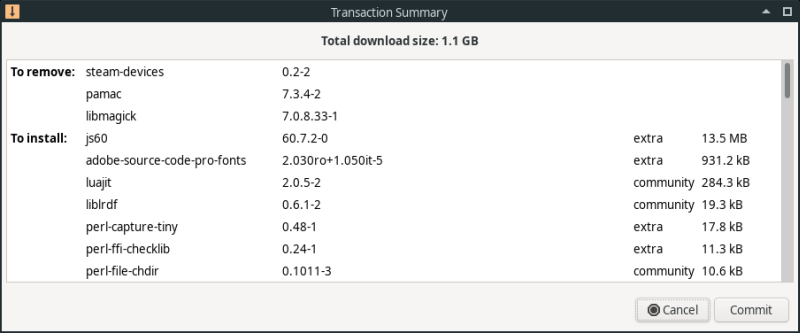
On the command line, pacman let me do things as I wanted, so this is kind of annoying. Moreover, there was a warning on some dependency cycle thing, and even though Manjaro was able to fix this on its own, it creates a sense of unease. Why would a user ever be told about something like this, especially if they have merely started the package manager and only tried to install an innocent, unrelated piece of software.
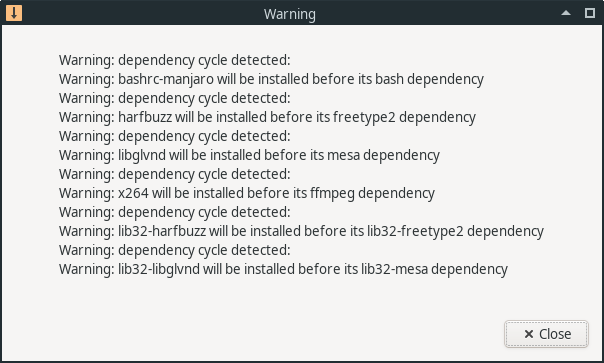
Eventually, the updates worked fine - it took a while, but the process completed successfully, similar to what we've seen with the Plasma edition. 400 packages, 1.1GB worth of data, not bad. The updates also fixed several bugs with applications, as we shall see shortly.

Applications
Manjaro Xfce also weighs 2.2 GB, much like the Plasma version. The software collection is decent. Firefox, Thunderbird, LibreOffice rather than Calligra here, Microsoft Office Online, two media players, and then some. But this wasn't all smooth sailing. Much like we've seen int he first review, Skype Online won't work due to unsupported browser error.

Steam wouldn't work either - missing 32-bit libs, which I found no way of replenishing manually. During the update, though, Pamac removed steam-native and replaced it with steam-manjaro, which works. But this is a clunky fix, and it's a problem that shouldn't have happened in the first place.
You are missing the following 32-bit libraries, and Steam may not run:
libgtk-x11-2.0.so.0
libva.so.1
libva.so.1
libva-x11.so.1
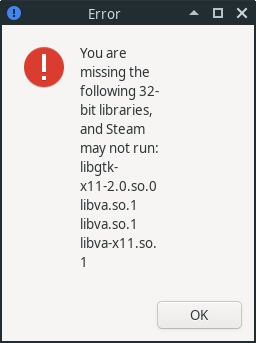

At first, I tried searching for the error and resolving it myself, and I did come up with several Manjaro forum threads, pointing to various tricks (like moving the ~/.local/share/Steam folder and such), but these didn't help at all.
/home/roger/.local/share/Steam/steam.sh: line 823: /home/roger/.local/share/Steam/ubuntu12_32/steam-runtime/run.sh: No such file or directory
Another suggestion was to change the 32-bit lib support under /etc/mhwd-x86_64.conf, but the tweak was already in place:
cat /etc/mhwd-x86_64.conf
MHWD64_IS_LIB32="true"
In the end, things worked fine, but there's really no reason for many of these errors.

Desktop customization
Not easy. I had similar issues to what I've encountered in Ubuntu MATE. Plank installed fine but would crash every single time I tried to drag 'n' drop icons to rearrange them. So this is a no-go. Docky isn't available anymore, and I had to resort to Cairo Dock, which is fairly complex - we shall have a separate article slash guide on this one in the future. It took me quite a while getting everything sorted out nicely, and even then, I wasn't really happy.


Do I really want to manually select any of these?

Notice the line; oh, no right-click > prefs for Plank, either. And those two VLC icons, why?
No global menu is available by default, so that's another snag. There was a horizontal line across the bottom of the desktop, which you can remove by disabling shadows in the Compositor settings. Weird. Some of the windows had weird element clashes, and in a couple of places, toggles and sliders overlapped with text.

The text partially covers the sliders; very clunky.
On the ergonomic side, I found out the theme to be a bit exhausting after a while, because it doesn't have enough separation between active elements and background. This is modern and flat, but it's also less visually effective than say what Plasma does.
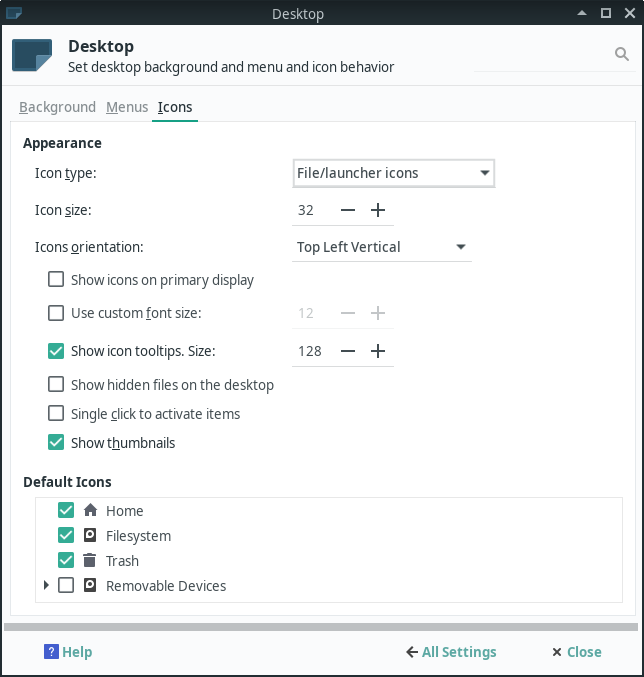
Another ULTRA-annoying thing was the BIOS-like beep, whenever you hit the Backspace button and there's nothing more to delete (like say menu search), or when you activate the power buttons. Loud and 1995. The solution to this is to create a file ~/.xprofile (if it doesn't exist) and then inside it, write or append the following bit of text (will work on next login):
xset -b
Eventually, I got what I wanted, but it took me several hours to tweak the system to my liking, and even then, it still wasn't a complete one, because I had no global menu. Moreover, Microsoft Office Online icons wouldn't integrate into Cairo Dock. This could be the dock issue, but this also affected Plasma and its icons-only task manager, so I'm not sure.
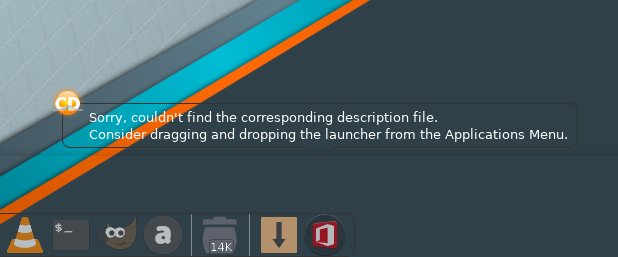
Another ergonomic doo-doo was: missing icons in the system menu. I can understand if the icon issues I encountered with my previous install was due to the fact I've reused the old account - but then, the issue only manifests for Breeze and Breath (default), not for Papirus, so that's weird. Here, this was a brand new, clean install, so the missing bits and pieces are an eye sore.
![]()
Final looks more or less - but I'm not enthused much:
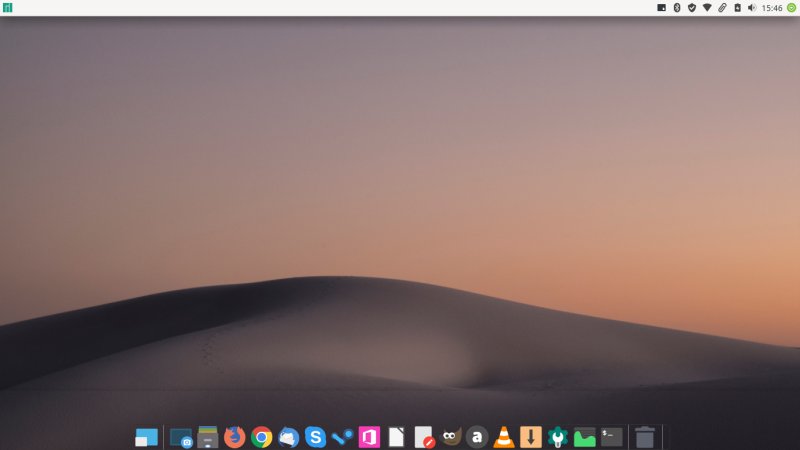

Hardware compatibility
No issues on this machine. Suspend & resume worked fine. All the Fn buttons do their magic. The touchpad was a little bit jittery, but that's about it. The system was also stable, and there were no weird errors on any kind.
Performance & resource usage
Very solid. CPU ticks 0% when you're not doing much, and the memory footprint on idle is about 480 MB, more or less like Plasma. It's funny that the Manjaro official page lists its KDE flavor as "heavy" - but it is comparable and sometimes even better than Xfce, and it's definitely much lighter and faster than Gnome, especially on older hardware. Ah well.

Battery usage
The laptop's cell currently holds 64% of its original capacity, so this means whatever we see on the screen, we need to add 50% (do the math, it works). With little activity and brightness set to half the max value, Manjaro Illyria Xfce offered about 160 minutes of juice. This means a new battery would give about 4 hours, which is quite commendable, and similar to some of the other nice-performance distros on this machine, including the likes of KDE neon, MX Linux - and also the resident Windows 10 system.

One curious thing is, if you go into the power manager, brightness reduction, there are two sliders under Reduce after - and I'm not sure why. Is this a glitch? Two levels of brightness? Why is it then possible to overlap them or switch their positions?
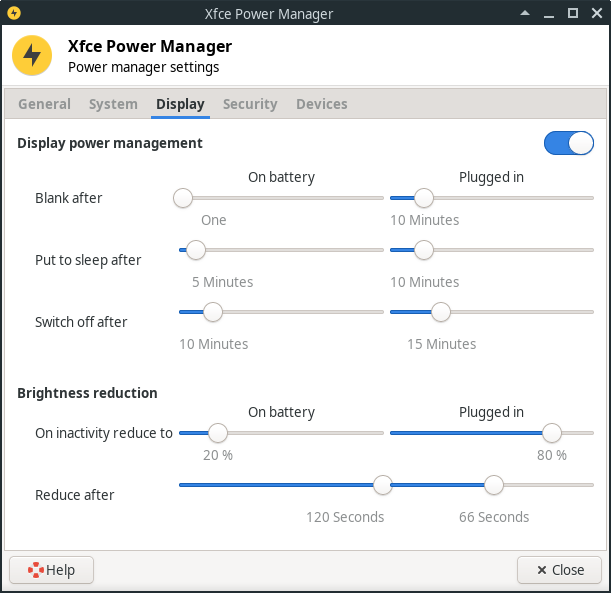
Conclusion
Overall, Manjaro 18.0.4 Illyria Xfce is a decent distro. It has lots of good and unique points. Network, media and phone support is good. You get a colorful repertoire of high-quality programs, the performance and battery life are excellent, and the desktop is fairly pretty. The system was also quite robust and stable.
But then, there were issues - including inconsistent behavior compared to the Plasma crop. The installation can be a bit friendlier (as Plasma one does). The package management remains the Achilles' Heel of this distro. Having too many frontends is confusing, and none of them do a great job. The messages on dependencies, the need for AUR (if you want fancy stuff), and such all create unnecessary confusion. There were also tons of visual papercuts, and I struggled getting things in order. All in all, Manjaro is getting better all the time, but it is still too geeky for the common person, as it breaks the fourth wall of nerdiness too often. 7/10, and I hope it can sort itself out and continue to deliver the unique, fun stuff that gets sidelined by the rough edges.
Cheers.